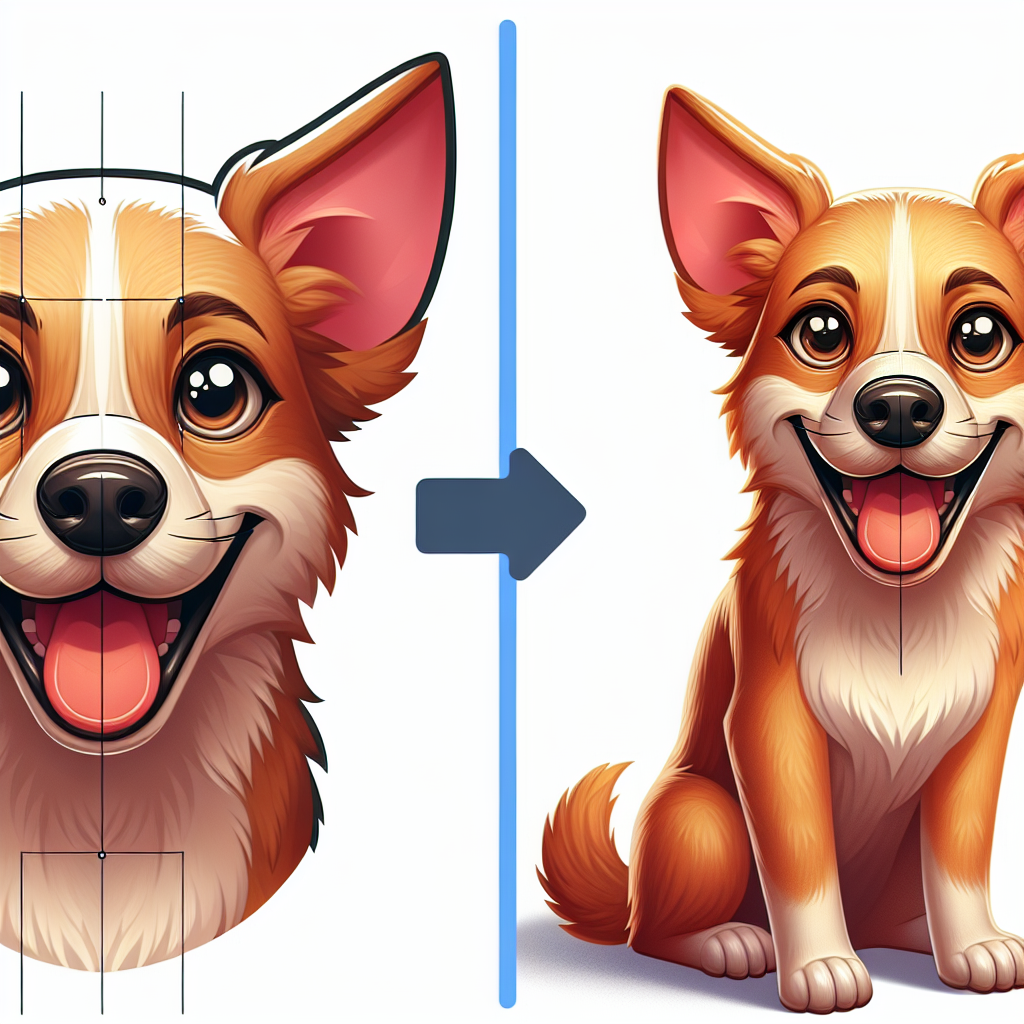The Flea Dilemma: Why Prevention Matters

Fleas—those tiny annoyances that have us all scratching our heads. You see, the importance of flea prevention for dogs is not just about keeping your furry friend comfortable. It’s more like an unending war between you and these little pests. They seem to appear out of nowhere, usually when you’re least prepared. Imagine this: it’s a beautiful day, you’re all set for a picnic with your dog, and bam! Your pup is scratching like he’s auditioning for a flea circus. It’s frustrating, isn’t it?
These pesky creatures don’t just make dogs uncomfortable—they can turn into a full-blown problem. Fleas can cause skin allergies, hot spots, and even anemia if things get real bad. And let’s not even get started on the potential for tapeworms. Yeah, fleas carry those too. It’s like they have their own little horror show ready to unleash. Trust me, having spent over 20 years in the pet industry, I’ve seen more dogs tormented by these pests than I care to recall. Prevention is key here, folks. It’s like guarding the fort before the enemy attacks.
Understanding Flea Life Cycle and Behavior
Now, let’s talk about the flea’s life cycle in dogs. This isn’t just a biology lesson; it’s crucial intel for winning this war. Fleas are sneaky little devils. You see them, you think you’ve got them all, and the next thing you know, they’re back. This is because their life cycle is like a well-oiled machine. It starts with the egg stage. These eggs drop off your dog and find a cozy place to hatch. Then you get the larva, pupa, and finally, the adult flea—the one that makes your dog itch like crazy.
Here’s the kicker—the adult flea is just a fraction of the problem. The rest are lurking in your carpet, your dog’s bed, or any place they can hide. So, simply getting rid of the adult fleas on your dog isn’t going to cut it. You need to break the cycle. That’s the real trick. And if you think it’s just a summer problem—think again. Fleas can survive in your home all year round. They’re like the unwanted guests who just won’t leave.
Types of Flea Prevention Products for Dogs
Alright, let’s dive into the types of flea treatments for dogs. There are more options than toppings on a pizza, and each one claims to be the best flea prevention for dogs. You’ve got your topicals, the ones you squeeze onto your dog’s skin. Then there are oral medications—those are like little flea bombs going off inside your dog’s system. Collars are an option too, giving off chemicals that keep fleas at bay.
Sprays and shampoos are also in the lineup. They’re like the quick fixes—good for immediate relief but not always the long-term solution. And for those who like to keep things natural—essential oils and herbal remedies are out there too. But beware—natural doesn’t always mean effective. It’s like trying to stop a hurricane with a paper towel. You might need a bit more muscle.
Common Ingredients in Flea Treatments
Now, about those common flea treatment ingredients. If you’ve ever read the back of a flea treatment label, you know it can sound like a chemistry class. But these ingredients play a big role in how effective a product is. We’ve got fipronil, which targets the nervous system of the flea. Then there’s imidacloprid—another heavy hitter in the flea-fighting world. It’s like the James Bond of flea treatments—slick and effective.
Permethrin is another player, often found in flea collars and sprays. It’s great for repelling fleas, but be careful if you have cats—that ingredient’s not cat-friendly. S-methoprene and pyriproxyfen are often used to break the flea life cycle, preventing those nasty eggs from hatching. These ingredients are the unsung heroes in many products. They work quietly in the background, breaking the cycle and keeping your pup itch-free.
Veterinary Recommendations and Considerations
Finally, let’s get to the vet-recommended flea prevention. Now, I’m not a vet, but I’ve had plenty of chats with them. They usually recommend a combination approach. You know, a bit of this, a bit of that—like making a great stew. Vets often suggest pairing a fast-acting product with a long-term preventative. It’s like hitting the problem with a one-two punch.
But here’s the thing—your vet knows your dog better than a label does. They can tailor recommendations based on your dog’s age, health, and lifestyle. Maybe your dog swims a lot, or perhaps he’s a couch potato. These things matter when picking the right treatment. And if you’re ever in doubt, a quick call or visit to the vet can clear things up faster than you can say “flea infestation.”
So, folks, that’s the lowdown on keeping your dog flea-free. It’s not about finding the best flea prevention for dogs in a single product. It’s about understanding the enemy and using the right tools at the right time. Thanks for sticking around and reading my ramblings. Go on, give your dog a scratch behind the ears from me, and remember—you’ve got this!
The Unsung Heroes: Natural Flea Prevention Methods
Let’s talk about those little buggers that drive our furry pals nuts—fleas. You know, the ones that make your dog scratch like a maniac. Flea prevention isn’t just a bottle of something you grab at the store. It’s a whole world out there. Let’s dive into the natural flea prevention for dogs. Now, I’m not saying you need to start growing your own herbs or anything, but some simple, natural stuff can do wonders.
Take diatomaceous earth, for instance. It sounds like something from a sci-fi movie, but it’s just a fine powder you sprinkle on your dog’s coat. No fancy equipment needed. Just rub it in and let it do its magic. And then there’s apple cider vinegar. Yeah, the stuff you have in your kitchen. Mix it with water and use it as a spray. Your dog might smell like a salad dressing, but hey—no fleas.
Then there’s the power of essential oils. Lavender, peppermint, and cedarwood aren’t just for fancy candles. They can keep fleas at bay. Just a few drops in water, spritzed around, and you’re golden. It’s like aromatherapy for your pooch. But remember, not everything natural is safe—some oils can be toxic to dogs. So, do a little research or check with a vet.
The Vet’s Office: What to Expect When Seeking Professional Treatment
Alright, so you’ve tried the natural route and your dog is still scratching like he’s auditioning for a flea circus. It’s time to head to the vet’s office. Walking in there, you might feel like you’re about to get hit with a ton of jargon. But fear not—professional flea treatments for dogs are straightforward.
The vet might suggest some vet-recommended flea treatments. These aren’t just random suggestions—they’re based on your dog’s needs. Maybe it’s a topical treatment, or a pill that makes fleas drop dead as soon as they bite. Pretty neat, huh? You’ll sit in that little room with the steel table, and the vet will outline the plan. It feels almost like a strategy session for flea warfare.
Expect to fork over some cash, though. Vet treatments don’t come cheap. But hey, what’s a few bucks when it saves your dog from going bonkers? And if you’re lucky, the vet might even throw in a tip or two for home care. So, listen up and maybe jot down a note or two.
DIY Flea Traps: The Art and Science of Home Remedies
Now, let’s roll up those sleeves and get crafty. DIY flea traps for dogs are like an art project with a twist. You’re not just making something pretty—you’re making something that works. Start with a shallow dish of soapy water. Place it near a light source, and watch as fleas dive in. It’s like a pool party they can’t resist.
Or, try the flea comb—an old-school tool that’s still a gem. Comb through your dog’s fur, and the fleas get caught in the teeth. It’s oddly satisfying, like you’re a detective finding clues. And let’s not forget about baking soda and salt. Sprinkle it on your carpets, let it sit, and vacuum it up. It’s a low-cost way to keep fleas at bay.
Home remedies for dog fleas aren’t about spending big bucks. They’re about using what you’ve got and making it work. It’s flea prevention with a bit of elbow grease and a lot of love.
The Flea Market: Understanding Over-the-Counter Solutions
So, you’re strolling down the pet aisle at your local store, and there it is—an entire shelf of over-the-counter flea solutions for dogs. It’s like a flea market of products promising relief. But what do you pick?
Spot-on treatments are popular—easy to apply and effective. Just a quick squeeze between the shoulder blades and done. Then there are flea collars, which have been around forever. They’re like a defensive shield your dog wears. And let’s not forget shampoos. Lather up and rinse those fleas away.
But here’s the thing—over-the-counter doesn’t mean one-size-fits-all. Some products might work like a charm, while others fall flat. So, it’s all about trial and error. You grab a bottle, try it out, and see how your dog reacts. No guarantees, just a bit of experimentation.
Seasonal Flea Warfare: Adjusting Your Strategy Throughout the Year
Now, let’s talk about seasonal flea prevention for dogs. Fleas aren’t just a summer thing. They’re sneaky little critters that show up when you least expect it. So, it’s all about strategy.
In spring and summer, when fleas are having the time of their lives, ramp up your efforts. Use a mix of methods—maybe a natural remedy and an over-the-counter product. Come fall, don’t relax just yet. Fleas can linger like that one guest who won’t leave the party. Keep up the treatments, maybe switch to something milder.
And in winter, when everything seems calm, don’t let your guard down. Fleas can still find ways to make your dog’s life miserable. Maybe scale back on the frequency, but don’t stop completely. Remember, flea prevention is a year-round commitment.
So, there you have it—the scoop on the best flea prevention for dogs. It’s a mixed bag of methods that keeps those pests in check. Thanks for sticking around, and may your dog stay itch-free!
How to Choose the Right Flea Prevention for Your Dog
Ah, the age-old dilemma of choosing dog flea prevention. It’s like picking the right pizza topping—one wrong move and you might regret it. You wouldn’t want to just grab the first shiny box on the shelf, would ya? No, sir. You gotta think about your dog’s size, age, and even their lifestyle. Is your pup a couch potato or a mud-loving adventurer? These little details make a difference. Some treatments work better for small dogs, others for the big guys. And hey, don’t forget to chat with your vet. They’ve got the lowdown on the best flea prevention for dogs that’ll suit your furry friend.
Now, let’s talk options. Pills, collars, topicals—it’s like a flea-fighting buffet out there. Each has its perks and quirks. Pills might be the go-to for those who want quick action. Collars? Well, they’re the long-game players—offering months of protection. Topicals are the middle ground—easy to apply and effective. But, and this is a big but, not every product is a fit for every dog. Some pups might react to certain chemicals or ingredients, so keep an eye out for any odd behavior after application. It’s like being a detective, but instead of solving crimes, you’re preventing a flea invasion.
Common Mistakes in Flea Prevention
We all mess up sometimes. Flea prevention is no exception. Take it from someone who’s been around the pet block a time or two. One of the biggest mistakes in flea prevention is jumping the gun and bathing your dog right after applying a topical treatment. It’s like washing off a fresh coat of paint—there goes all your hard work.
Another classic blunder? Not sticking to a schedule. Fleas don’t take vacations, so neither should your prevention plan. This isn’t a once-and-done kind of deal. You gotta keep at it month after month. And for the love of dog bones, please read the instructions. If it says one pill per month, don’t go rogue and double up. More isn’t always better.
And hey, don’t forget about your home. Your dog might be flea-free, but your carpet could be a flea’s dream home. Vacuum like you mean it, and wash your dog’s bedding regularly. It’s a team effort, folks.
Natural Flea Prevention Methods
Alright, let’s get a bit crunchy here. For those of you who prefer to keep things au naturel, natural flea prevention for dogs is a thing. Some folks swear by essential oils. A little lavender or cedar oil can go a long way, but remember, some oils aren’t dog-friendly. Do your homework.
Then there’s the trusty flea comb—simple, old-school, and effective. It’s the kind of tool your grandma might’ve used, and it works. A few minutes of combing can help catch those sneaky little critters before they make themselves at home.
And let’s not forget about diet. A healthy dog is less appealing to fleas. Some dog owners mix brewer’s yeast into their dog’s food. It’s said to make their blood less tasty to fleas. Who knew, right? But, as always, chat with your vet before making any changes to your dog’s diet.
The Cost of Flea Prevention: Is It Worth It?
Ah, money—can’t live with it, can’t live without it. Flea prevention costs can add up, no doubt. But let’s weigh it against the cost of dealing with a full-blown flea infestation. Spoiler alert: an infestation will hit your wallet harder.
Think about it—vet visits, treatments, cleaning supplies, and not to mention the toll on your sanity. A good flea prevention plan is like insurance. A few bucks here and there can save you a fortune down the line.
And here’s a tip for the budget-conscious: keep an eye out for bulk deals or subscribe and save options. A little planning can go a long way. Sure, the initial outlay might sting a bit, but when you’re lounging in a flea-free home, you’ll know it was worth it.
Saying Goodbye to Flea Troubles: What to Do After Flea Prevention
So, you’ve tackled the flea problem. Your dog is flea-free and life is good. But don’t kick back just yet. Post-flea prevention care is key. Keep an eye on your dog’s skin. Some treatments can leave them a tad itchy or irritated.
And don’t forget about long-term flea prevention strategy. Just because the fleas are gone doesn’t mean they won’t try to come back. Stick to your prevention schedule like glue. It’s your first line of defense.
Also, do a sweep of your house. Make sure it’s not a flea hotel. Vacuum, dust, wash—rinse and repeat. It’s not glamorous, but it’s necessary.
So, there you have it. Thanks for sticking around with me on this flea-filled journey. You’ve got the know-how now. Go on, give yourself a pat on the back. You’ve earned it. And next time you see a dog, scratch their belly for me, will ya?
Quick Takeaways:
Alright, folks, here’s the lowdown on the best flea prevention for dogs. Fleas are like that annoying houseguest who never leaves. They jump on your dog, set up shop, and before you know it, they’ve turned your home into party central. Understanding the flea lifecycle in dogs is key—those little buggers go from egg to adult faster than you can say “itchy.”
The importance of flea prevention for dogs can’t be overstated. It’s not just about comfort; it’s about health. Fleas can transmit diseases and cause allergic reactions. So, what’s in our flea-fighting arsenal? We’ve got a smorgasbord of options, from natural flea prevention for dogs using essential oils and flea combs, to over-the-counter flea solutions and vet-recommended flea treatments that pack a punch.
Now, don’t forget the homefront. DIY flea traps for dogs and post-flea prevention care are part of the gig. Keep your home clean—vacuum like there’s no tomorrow. And let’s not overlook the cost of flea prevention. Sure, it’s an investment, but compared to the chaos of an infestation, it’s a no-brainer.
In the end, choosing dog flea prevention is about finding what clicks for your dog’s needs. It’s a mix of science, a sprinkle of nature, and a whole lot of patience. So, roll up your sleeves, dive into the buffet, and keep your furry buddy itch-free.
FAQs:
1.
What’s the best flea prevention for dogs during flea season?
Flea season can be a nightmare. The best flea prevention for dogs during this time involves a layered approach. Use vet-recommended flea treatments—these usually contain common flea treatment ingredients like fipronil or imidacloprid. Pair this with seasonal flea prevention for dogs, like regular grooming and checking for fleas. Don’t shy away from natural remedies; they can be a lifesaver for sensitive dogs.
2.
How do natural flea prevention methods compare to vet-recommended flea treatments?
Natural flea prevention for dogs can work, but it’s not always as potent as vet-recommended flea treatments. Essential oils like lavender and cedarwood can repel fleas, while frequent combing helps. But if you’re dealing with a serious infestation, those vet solutions with powerful ingredients are often the go-to. The trick? Balance. Use natural methods for maintenance and vet-suggested treatments when things heat up.
3.
What common mistakes should I avoid in flea prevention for dogs?
Mistakes happen. Bathing your dog right after applying topical treatments is a big no-no—it washes away the product. Another mistake? Not treating the environment. Professional flea treatments for dogs are great, but fleas love your carpet too. And don’t forget to follow the instructions on the label. Misuse can mean less protection or, worse, harm to your pet.
4.
Are over-the-counter flea solutions for dogs effective?
Over-the-counter flea solutions can be effective for mild infestations. They’re handy for quick fixes or as a preventative measure. But for persistent problems, or if you’re dealing with a flea army, vet-recommended treatments are the heavy artillery you might need. Remember, every dog is different, so what works for one might not work for another.
5.
Can home remedies for dog fleas replace professional treatments?
Home remedies like vinegar sprays or lemon juice can help in managing fleas, especially in the early stages. But they’re not a replacement for professional flea treatments for dogs. Think of them as a support act, not the main show. They can complement your main flea prevention strategy but might not be enough on their own.
Conclusion:
So, there you have it, folks—the wild, itchy tale of flea prevention. It’s like a dance, really, with a mix of moves to keep those fleas off your dog. The best flea prevention for dogs involves understanding what works for your four-legged friend and your lifestyle. Maybe it’s that vet-recommended treatment, or perhaps a natural method that fits the bill.
We’ve covered the highs and lows, from choosing the right product to those sneaky mistakes we all make. Keep your eyes peeled—flea prevention doesn’t stop at one application. It’s ongoing, like a long-term relationship with less drama. And while it might not be free, the peace of mind is worth every penny.
Thanks for tagging along on this journey. Remember, your dog’s comfort and health are top priority. So, go ahead—scratch that belly, give them a treat, and keep the fleas away. You’ve got this!
References:
1. https://www.petmd.com/dog/vet-verified/best-flea-tick-medications-for-dogs
2. https://www.nytimes.com/wirecutter/reviews/best-flea-treatment-cats-dogs/
3. https://www.akc.org/expert-advice/health/best-flea-tick-prevention-dogs/
4. https://www.vet.cornell.edu/departments-centers-and-institutes/riney-canine-health-center/canine-health-information/flea-and-tick-prevention
5. https://vetster.com/en/wellness/what-is-the-best-flea-prevention-for-dogs
Our solution eradicates fleas on contact without harmful chemicals, ensuring a safe environment for your pets and family. Easy to use and highly effective, SayByeBugs helps you maintain a flea-free home. Learn more and order today at SayByeBugs.com
Our solution eradicates fleas on contact without harmful chemicals, ensuring a safe environment for your pets and family. Easy to use and highly effective, SayByeBugs helps you maintain a flea-free home. Learn more and order today at SayByeBugs.com







